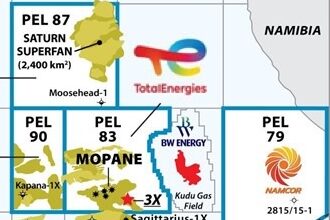Monster downturn may dictate big changes ahead
By Linda Hsieh, Editor & Publisher
We’ve always known that this industry was cyclical. There are good years, and there are bad years. But the downturn that we’ve seen over the past eight to nine months has been another kind of monster altogether.
This was no normal downturn, and we’re starting to see that the recovery – happening amid the biggest economic slowdown since the Great Depression – may not play out the way it has in the past, either. It will likely require organizations to do things differently than what they’ve always done. In a survey conducted by EY in June and July this year, 92% of oil and gas executives said their organization will have to change the way it operates coming out of the current downturn.
For one, the digital transformation is pushing ahead full force, pandemic or not. If anything, the COVID-19 crisis has only accelerated the industry’s shift to remote operations and digital technologies.
“Most industry insiders recognize the competitive advantage a digitally enabled enterprise can deliver: 80% are investing at least a moderate amount in digital technology today,” the EY report stated. Respondents also pointed to data analytics and insights as the trend with the biggest potential to positively impact their business growth.
But there are serious challenges to achieving this transformation. It’s not as simple as buying a new piece of equipment or installing some new software on your rig’s control system. Much of the transformation revolves around intangibles like data, or the way your employees manage data, or how they share data with customers and vendors. In other words, it involves humans, and it’s messy.
In its report, EY urged companies to invest not only in the technical aspects of the digital transformation but also in the organizational and cultural elements. It’s not enough for companies to simply “do” digital. They need to become digital.
“Our survey revealed significant skill gaps even among current users of digital technologies. Workforce composition and training are widely acknowledged barriers to technology adoption, and the skillsets needed to onboard and extract value from digital technologies – data analytics, cybersecurity, data science, design thinking, artificial intelligence and others – far outpace the current level of maturity across the industry.”
For example, 57% of respondents recognized that their workforce don’t currently have sufficient skills to realize the full value of investments into artificial intelligence. The same skill gap was acknowledged by 52% of respondents for the field of data science.
There were other concerning trends for the future. Even though company leaders recognize the need for these new skills – and they estimate that 60% of current employees will need to be reskilled in order to maintain their company’s competitive advantage – many don’t believe their organizations have a robust plan to reskill their employees over the next three years.
In fact, 40% of respondents said their companies currently expect existing employees to pick up skills on the job, while 52% said they will likely rely on this approach in the future. Further, 49% said that their companies see training more as a cost center than as an opportunity for improvement.
Clearly, there is room here for change.
Opportunities in ESG
Besides the digital transformation, the drilling industry may also need to shift ESG efforts into higher gear. As operators face growing pressures from both shareholders and the general public, they will increasingly favor companies that can help them meet ambitious emissions targets.
For drilling contractors, this may prove to be a key opportunity for differentiation as business picks back up. A rig’s fuel efficiency, for example, may come to be analyzed as closely as its equipment downtime, its well control system and its safety performance.
Geothermal energy may also provide new low-carbon prospects in the coming years. While technical and regulatory challenges remain, the potential for new opportunities to make use of existing drilling rig assets should not be discounted. See page 22 for our report on challenges and innovations happening in the geothermal space. DC
Linda Hsieh can be reached at linda.hsieh@iadc.org.





